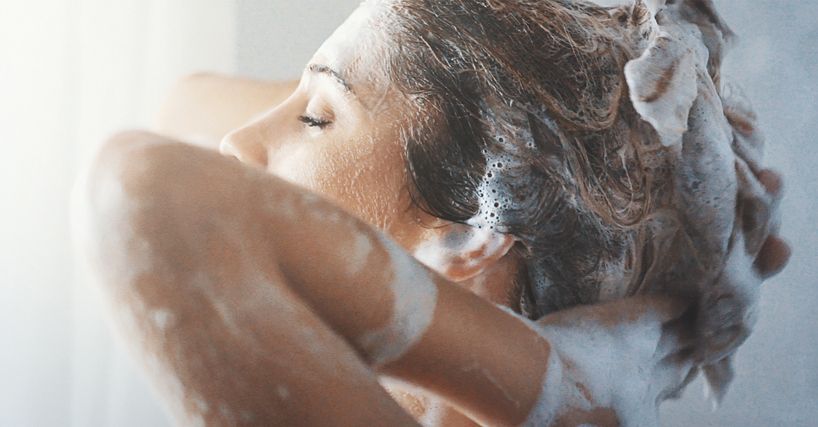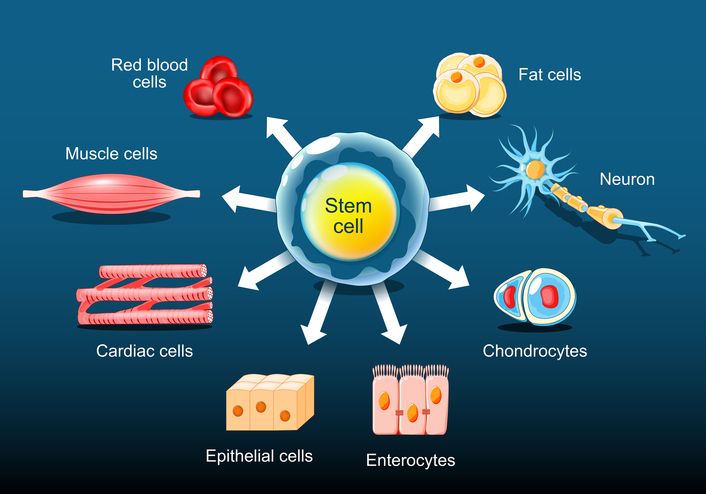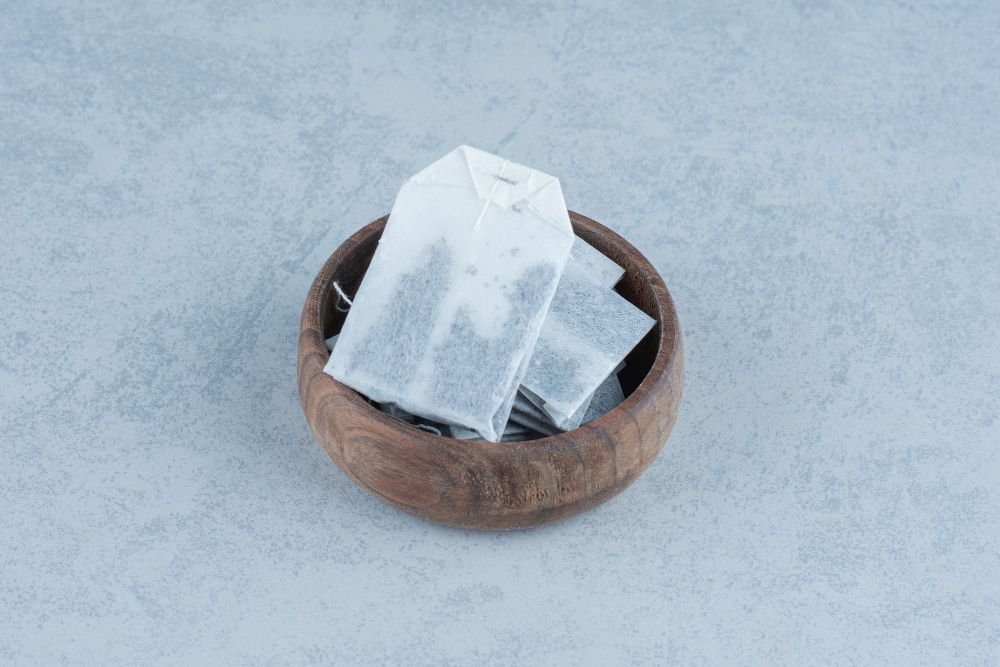

Book Now to Experience
F8 Hair Regrowth Treatment
1 Minute Self-Registration
Date should not be before minimal date
Author: Leila Tan|Updated: 23 July 2024
Don't freak out if you find a clump of hair in the shower as you're getting dry. Even though no one wants to lose hair, it's very common for a few to come out when you're in the shower. Learn more about how much hair loss is normal and when you should worry about the detached hairs by reading on.

1
How Do Our Hair Growth Cycle Work?
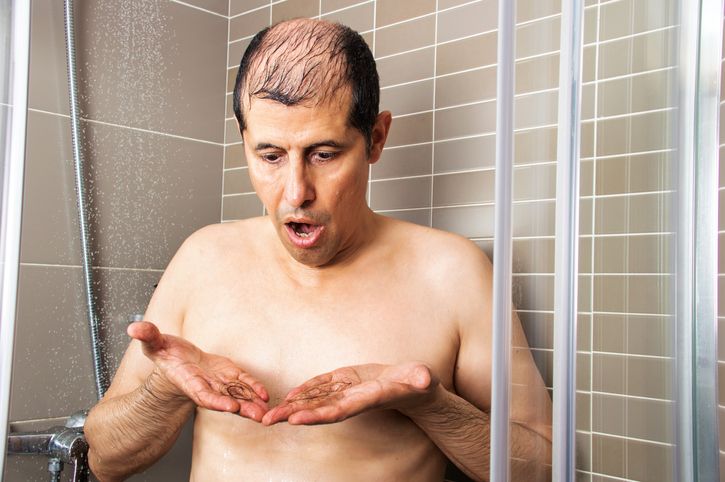
The three stages of hair growth are anagen, catagen, and telogen phase. Hair growth is a continuous cycle. At the end of each hair's life cycle, it is normal to lose hair. During the active anagen phase, hair grows quickly as the cells in the hair follicle divide and make hair cell proteins. Depending on their genes and age, this phase can last anywhere from two to eight years. During the short catagen stage, hair follicles shrink so that new hairs can grow in their place during the telogen stage, the next stage of hair growth. During the last phase, which is the telogen phase, hairs stop growing and eventually fall out so that new hairs can grow in their place. After this resting phase is over, a new growth cycle starts all over again from the beginning.


2
How Much Hair Loss Is Normal, And When Will It Become Too Much?
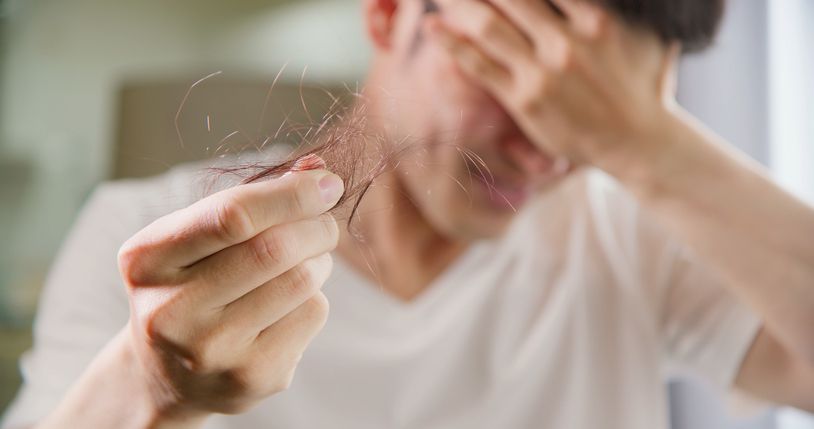
Normal hair loss ranges from about 50 to about 100 hairs each day, however this number varies widely from person to person. The loss of hair is a normal part of the ageing process, but it can be exacerbated by a number of factors, including physical or emotional stress, hormonal changes (such as those associated with pregnancy or menopause), certain medications, rapid weight loss or gain, medical conditions, hair styling treatments (such as dyeing or chemical treatments), and genetics. If you're going through any of these changes, you could notice that your hair is thinning in some places and shedding more frequently than usual. If your hair loss is more than 100 hairs each day for multiple days in a row, you may want to see a doctor or dermatologist to determine the cause.

3
If Your Hairs Falling Too Fast, These Might Be the Causes

It's normal to lose hair in the shower, but if you realise you are losing too much hair in the shower, you might want to find out why you are shedding so much hair. Men, women, and children can all lose their hair in a number of different ways. These things are
Androgenic alopecia
This type of hair loss, also called male or female pattern baldness, is caused by a mix of hormones and genes. In men, it usually looks like a receding hairline or thinning hair on the top of the head. In women, it usually looks like hair loss all over the scalp.
Telogen effluvium
This type of hair loss is usually caused by a shock to the body, like childbirth, a serious illness, or a sudden loss of weight. It causes more hair to fall out because the hair growth cycle moves faster. If the cause is fixed, the hair usually grows back within 6 months to a year.
Alopecia Areata
Alopecia Areata is an autoimmune disorder that causes patches of hair loss on the scalp and sometimes other parts of the body, like the beard and eyebrows. It usually comes on quickly and has no other signs or symptoms, but it may be linked to mood changes or stress levels.
Traction alopecia: This kind of hair loss happens when the follicles are pulled or pulled on over and over again. This is common in hairstyles like tight braids or ponytails. If the traction alopecia is not treated for a long enough time, it can lead to permanent hair loss.
Anagen effluvium
This type of hair loss is caused by certain drugs (like chemotherapy drugs), vitamin deficiencies, radiation therapy, and toxins like lead poisoning. It can cause hair to fall out quickly all over the body days or weeks after exposure.


4
What Causes Excessive Hair Loss?
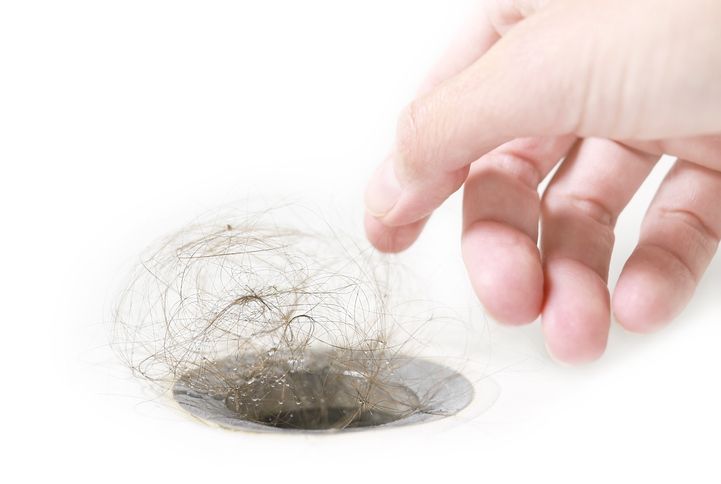
Certain medical disorders, hormonal imbalances, nutritional deficiencies, harmful hair-styling practices, drugs, and even some foods can all contribute to excessive hair loss. Inflammation caused by lupus, thyroid disease, or anaemia can prevent the body from producing hormones that promote hair growth, leading to hair loss. Hormonal changes, such as those seen during pregnancy or menopause, can also contribute to hair thinning or loss. Some believe that over-styling hair with tight ponytails or cornrows might damage your follicles and lead to baldness, while others believe that a lack of iron and B vitamins can inhibit hair development. Hair loss has been linked to many medications, including those used for chemotherapy and birth control. The "fight or flight" reaction triggered by stress is one possible cause of hair loss. Telogen effluvium is the most prevalent cause of hair loss in adults and can result from this condition.

Book Now to Experience
F8 Hair Regrowth Treatment
1 Minute Self-Registration
Date should not be before minimal date

5
When Should I Worry About My Hair Fall?
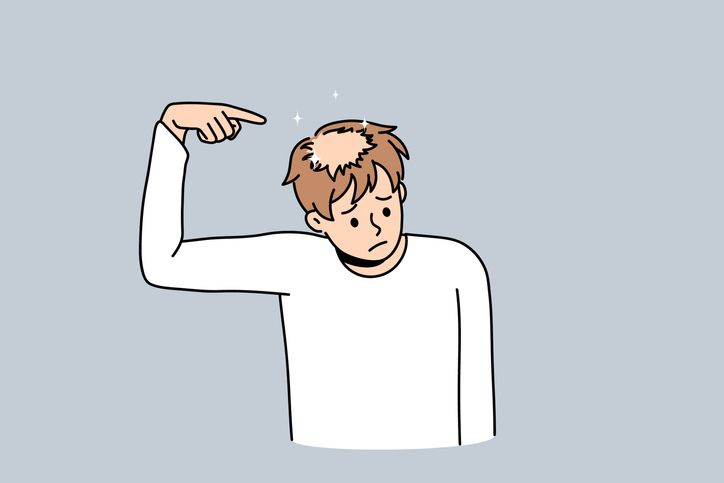
A significant proportion of the population, both men and women, experience hair loss. It can be caused by a variety of causes, including heredity and lifestyle modifications. Although hair loss is common, it can be a sign of underlying health concerns. Stress, hormonal fluctuations, and dietary inadequacies are the most prevalent reasons for hair falling.
If hair breakage or hair fall is excessive or happens in patches on the scalp or elsewhere on the body, it may be an indication of a more serious problem requiring medical treatment. Hair thinning on all areas of the scalp accompanied by itching or redness; hair loss that rises gradually over time; bald patches or hair breakdown; hair falling in clumps; and/or a rapid receding hairline are warning signs. If these symptoms linger for more than two weeks, it is essential to consult a healthcare professional in order to discover any underlying causes and receive the proper therapy.
In general, hair shedding is when more hair than usual falls out of the scalp. A 60-second hair count can be done at home to see if someone is losing hair faster than usual. For this test, they will need tweezers, a bowl or box, and a timer. First, take hair from each part of the head and put it in the container or on a paper towel. Then, use the timer to count how many hairs come out of each area in one minute (hairline, crown and temples). Then, add up all three areas to get the total number of hairs in that minute. If you lose more than 5–10 hairs per minute, you might need medical help because you are losing too much hair.


6
How To Do The 60-second Hair Count at Home?
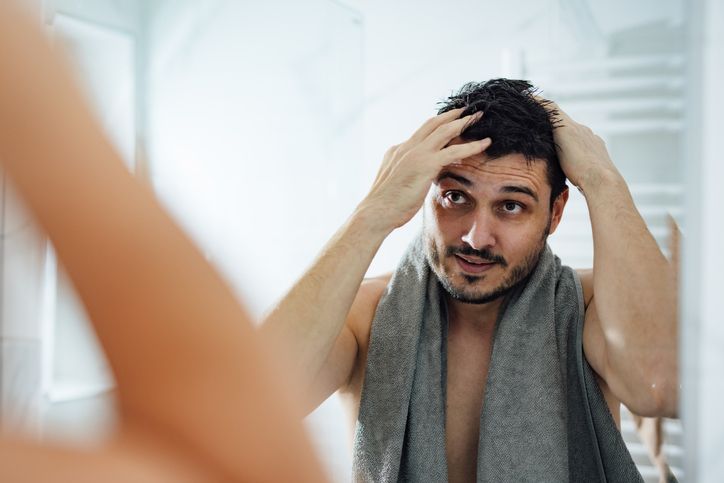
At-home 60-second hair counts are a simple method for determining hair falling. It entails extracting a small sample of hair from the scalp and counting the number of hairs present in one minute. The hair should be harvested from various parts of the scalp, including the hairline, crown, and temples. To accomplish this, you will need a pair of tweezers, a bowl or container, and a timer or clock, among other basic supplies.
Start by removing a small sample of hair from each region with the tweezers. Put the items in the container or on a piece of tissue or paper towel. Beginning at the hairline, use the timer to count the number of hairs present over the period of one minute. Do this independently for each location (crown and temples).
Once you have completed counting in all three locations, sum the totals for each part to determine the total count for the minute. This number will indicate if you shed hair normally or whether there is an increase in hair falling that requires further study.
It is crucial to remember that hair shedding differs from person to person, making it difficult to define 'normal' standards. Nonetheless, shedding more than 5 to 10 hairs per minute may suggest significant hair shedding requiring medical treatment.
Read More

7
How Can I Improve My Hair Health?
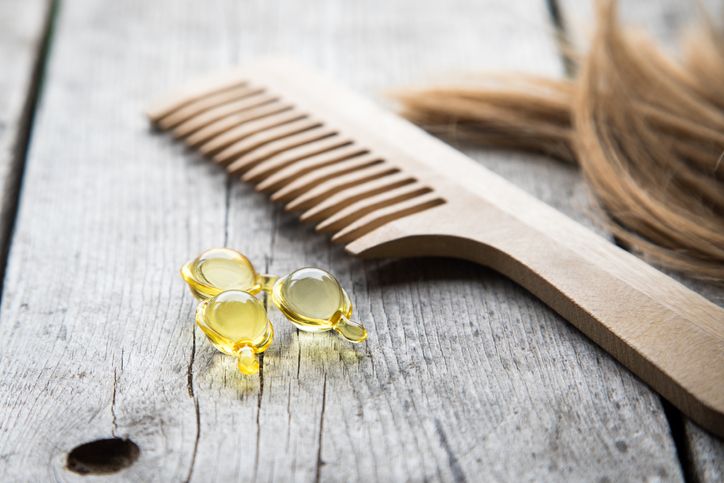
Losing hair can be hard, and the best way to improve hair health is to find the best hair loss treatment. In general, there are two main types of hair loss treatments: medical and natural.
Prescription drugs like minoxidil (Rogaine) or finasteride (Propecia), which have been shown to help hair grow, are used in medical treatments. However, these drugs can have side effects. There are several options for people who want to reduce hair shedding using the natural way. These include supplements like biotin, saw palmetto, and omega-3 fatty acids, hair care techniques like scalp massages, using natural oils for dry hair such as rosemary. You should also avoid using too many styling products or doing tight hairstyles like braids or ponytails that can damage your hair.


8
What To Do If I Am Losing Hair Excessively?
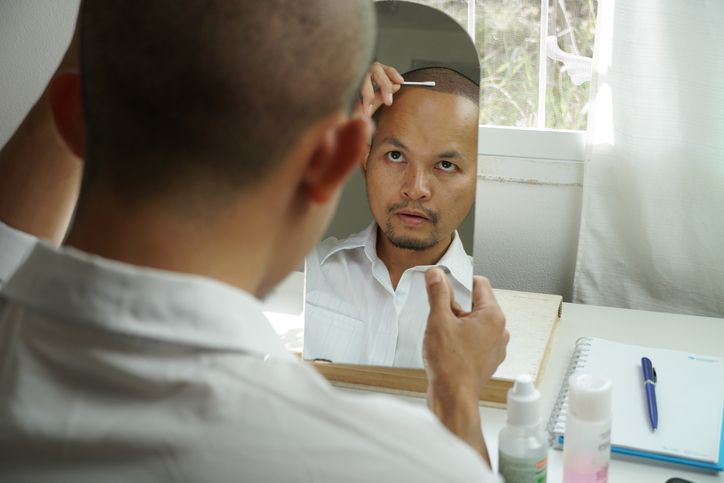
If natural hair loss remedies don't work, you might want to consider hair loss treatment to reduce hair loss. After all, taking fewer showers, avoiding combing wet hair or spamming all kinds of natural remedies are not a cure, especially when Singapore is such a hot country. The best treatment for hair loss can be determined once you find out the underlying cause, and here are several options.
Minoxidil
This is a solution that can be used topically to the scalp twice daily and has been approved by the US Food and Drug Administration, is one option. By improving the health of the scalp and feeding the follicles, it aids in hair growth.
Finasteride
The hormone dihydrotestosterone (DHT) is responsible for the thinning of hair and is inhibited by the oral medicine finasteride, which is taken daily. Over time, hair follicles can regrow healthy hair if DHT levels are lowered.
Platelet Rich Plasma (PRP)
In this treatment, your own platelets are injected into the scalp as part of a series of treatments for non-surgical hair restoration. By reawakening dormant follicles and boosting collagen production, this aids in a speedier recovery and enhanced hair growth.
Hair implanting
Surgically taking grafts of healthy hair from the back or sides of the head and implanting them in areas of the scalp with more thinning or baldness is what is known as hair transplantation. Long-term volume and density loss can be corrected by this method, and the results can be permanent.
Low level laser energy treatment
Due to its noninvasive and safe nature, low level laser hair therapy (LLLT) has become an increasingly popular treatment for hair loss. Low-level laser therapy stimulates hair follicles with low-intensity light, stimulating hair growth and preventing further hair shedding. The laser light's wavelength increases cell metabolism, enabling your follicles to create thicker, denser, and stronger hair. This increases blood circulation around the scalp, which helps give crucial nutrients to hair follicles, rejuvenating them and promoting hair growth. In addition, by restoring natural colour to grey hair shafts, it can slow down the premature greying process.
Enhanced hair texture and lustre, as well as greater flexibility in weakened or damaged hair, are additional advantages of low level laser treatment. Regular use may even enhance scalp health by strengthening existing hair follicles and promoting new hair growth. As a result, low intensity laser therapy is frequently combined with other therapies, such as pharmaceuticals or topical remedies, for more effective hair loss management.

Book Now to Experience
F8 Hair Regrowth Treatment
1 Minute Self-Registration
Date should not be before minimal date

9
Why F8 Hair Regrowth Treatment Can Be Your Go-To Hair Loss Treatment
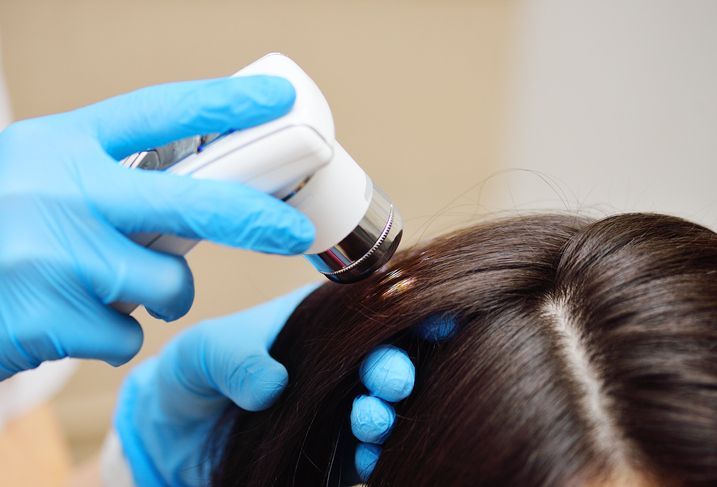
F8 Hair Regrowth Treatment is a non-invasive treatment that stimulates hair growth and maintains a healthy scalp. A hair growth serum with low laser intensity stimulates inactive hair follicles and fortifies the hair papilla from the inside. In addition to healing the capillaries and promoting microcirculation, the energy and serum contribute in the delivery of nutrients to the hair follicles. The therapy will result in increased hair growth, stronger hair strands, and decreased hair loss.
The low-energy laser helps enhance hair follicles, papillae, and blood vessels. It is also an extremely safe hair and scalp treatment for both men and women with hair and scalp issues such as hair loss, thinning hair, oily scalp, sensitive scalp, receding hairline, balding crown, alopecia areata, scalp inflammation, male pattern hair loss, female pattern hair loss, postpartum hair loss, and more.
The in-house medical staff will examine your scalp under 200x magnification to identify the potential causes of excessive hair shedding. The therapist delivers low-level laser light uniformly across the scalp during the session to stimulate hair follicles and hair papilla. The energy emitted promotes blood circulation, delivering nutrients for follicle development and a healthier scalp. What are you waiting for? If you still worry about your hair loss in the shower, schedule an appointment today if you wish to regain healthy hair!
FAQ
Is it true that hair changes every seven years so hair loss is normal?
A single hair has an average lifespan between 2 and 7 years. The hair then falls out and is replaced by a new one. Every day, around 100 hair shafts come out, therefore hair follicles are always in various stages of the hair cycle. Moreover, certain portions of the scalp age at varying rates. Hence, it is true that your hair always changes, but as you age, the 7-year cycle affects less and less of your head. However, you should not take it too lightly if you realise the hair sitting on your head gets lesser significantly
Does damaged hair continue to grow?
Fortunately, in the vast majority of instances, damaged hair can regrow as long as the follicle remains intact. Hence, damaged hair can still grow, but repeated damage might be detrimental.
Does a cold shower help slow hair shedding?
The cold water used as a last rinse in the shower aids in moisture retention and follicle contraction, both of which contribute to reduced hair loss. Cold water closes the hair's cuticles, making the hair more reflecting and lustrous. Also, persons with curly or thin hair may find that showering with cold water reduces frizz and protects hair from damage. Hence, if you want your hair to grow, you should wash it with cold water but not hard water.
I want to know how many sessions I need to do to start seeing results.
Adhering to a treatment plan of at least three to six months' duration is recommended. Before getting the F8 treatment, you should talk to a specialist if you've recently had any other kind of hair treatment. After treatment, shield your scalp from the sun by donning a hat or hiding under an umbrella. Don't fret; you can continue washing your hair as usual.
Does dyeing hair facilitate hair loss?
Hair colouring doesn't stop hair from growing, but it can cause hair shedding if it damages the hair. Hair dye can't reach hair that hasn't grown out yet, so hair dye can't cause hair loss in and of itself. However, hair shedding can get worse when you dye your hair.

Book Now to Experience
F8 Hair Regrowth Treatment
1 Minute Self-Registration
Date should not be before minimal date
Recommended Articles
COPYRIGHT© NEW BEAUTY MANAGEMENT LIMITED 2025. ALL RIGHT RESERVED.

